 The term 'insectivore' is obsolete; it is no longer used as an official classification. We will treat 'insectivore' as the common name applied to creatures that primarily eat small invertebrates and insects, specifically insect-eating mammals, of which there are about 450 species. Most mammalian insectivores are small, and include creatures like hedgehogs, some types of moles, shrews and moon rats. Larger insectivores include the giant anteater and the sloth bear. Insectivores are characterized by their long snouts, poor eyesight, and keen sense of smell. Some species are completely blind. Their external ears may be very small or non-existent. Here are some examples. 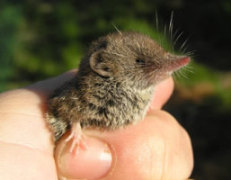 Etruscan shrews
Etruscan shrewsThe Etruscan shrew, with a mass of just 2 grams, is the smallest insect-eating mammal. This tiny shrew has a body length of about 4 centimetres, excluding the tail. It is characterized by very rapid movements and a fast metabolism, eating up to two times its own body weight per day. It feeds on various small vertebrates and invertebrates, mostly insects. 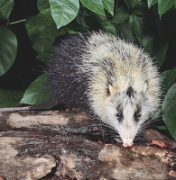 Moon Rats
Moon RatsThe Moon Rat at 1.5 kilograms is a large Southeast Asian insect-eating mammal that is essentially a primitive tropical hedgehog, with a long tail and fur instead of spines. Despite their name, moonrats are not rodents, although they have a slim body, small unpigmented ears, small eyes, and a tapered muzzle with long whiskers. Like other insectivores, they have a mobile snout. 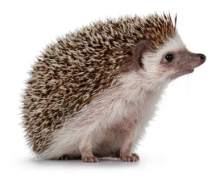 Hedgehogs
HedgehogsThe hedgehog is a spiny mammal found throughout parts of Europe, Asia, and Africa, and in New Zealand by introduction. There are no hedgehogs native to Australia or the Americas. Hedgehogs are easily recognized by their spines, which are hollow hairs made stiff with keratin. Their spines are not poisonous or barbed and, unlike the quills of a porcupine, do not easily detach from their bodies. Hedgehogs roll into a tight spiny ball when threatened. Interestingly, hedgehogs have some natural immunity against some snake venom. Hedgehogs are primarily nocturnal, and sleep for a large portion of the day under bushes, grasses, rocks, or most commonly in dens dug underground. All wild hedgehogs can hibernate, though the duration depends on temperature, species, and abundance of food. Hedgehogs are actually omnivores; they feed not only on insects, but also snails, frogs and toads, snakes, bird eggs, carrion, mushrooms, grass roots, berries, and melons. 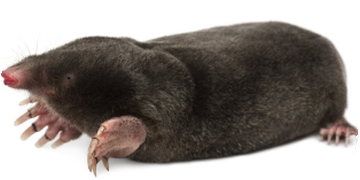 Moles
MolesMoles are small, subterranean mammals with cylindrical bodies, velvety fur, small inconspicuous eyes and ears, reduced hindlimbs, and short, powerful forelimbs with large paws for digging. Moles may be pests to gardeners, but they provide soil aeration, and feed on slugs, insects, and small invertebrates that eat plant roots. 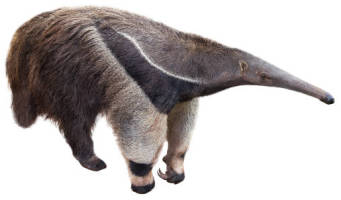 Giant Anteaters The giant anteater is an insectivorous mammal native to Central and South America. Of the four species of anteaters, it is the largest at about 2 m long and a weight of up to 50 kg. It has an elongated snout, bushy tail, long fore claws, and distinctively coloured fur. It's found in many habitats, including grassland and rainforest. It feeds on ants and termites, using its fore claws to dig them up and its long, sticky tongue to collect them. 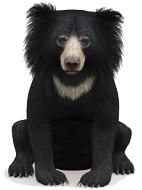 Sloth Bears
Sloth BearsThe sloth bear is a nocturnal bear species native to India and Sri Lanka. Standing about 75 cm at the shoulder and weighing up to 113 kg, the sloth bear is about 1.5 metres long. It feeds mostly on ants, bees and termites. It has long, shaggy fur, a mane around the face, and long, sickle-shaped claws. Its long lower lip and palate are used for sucking up insects. |